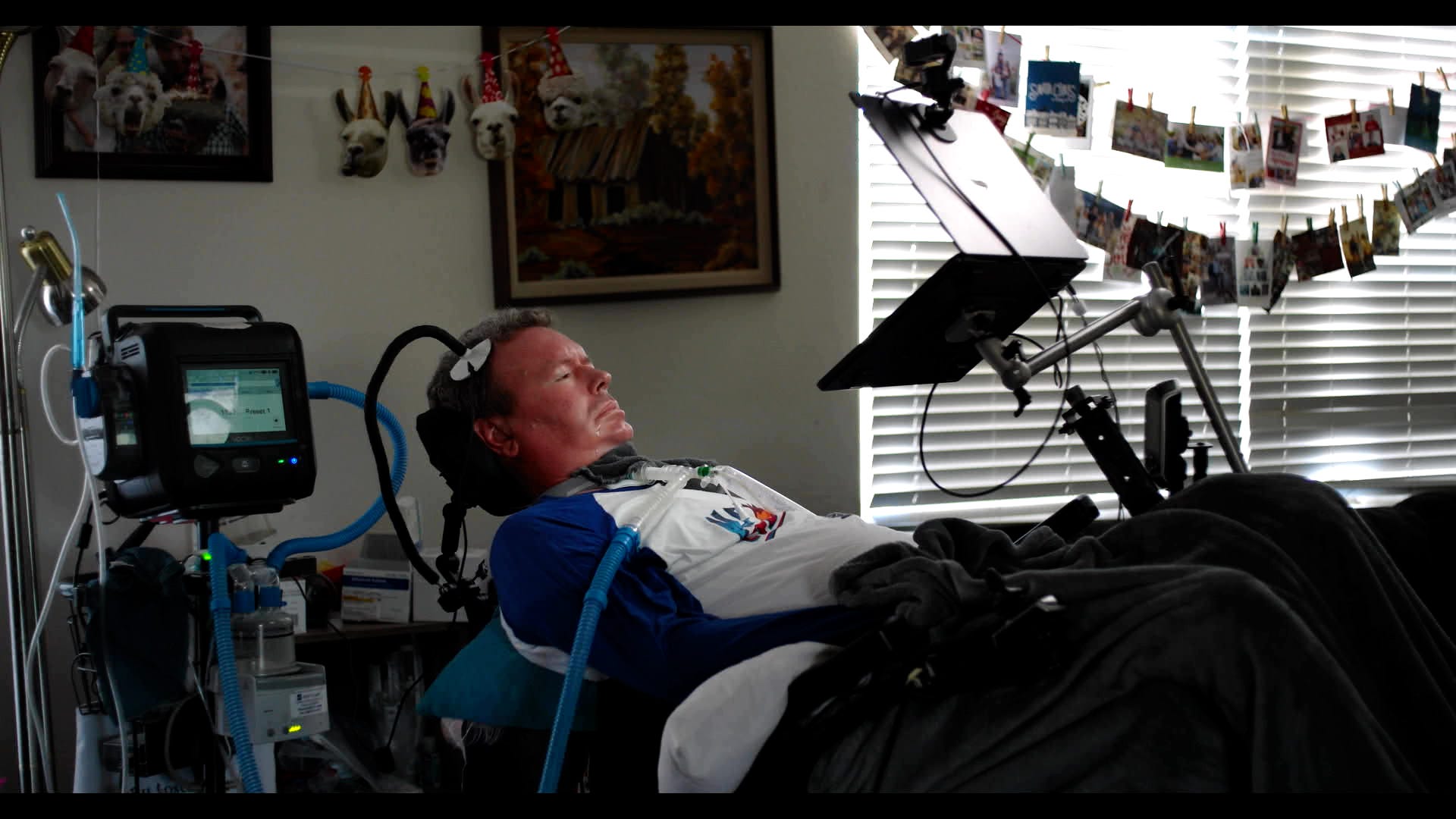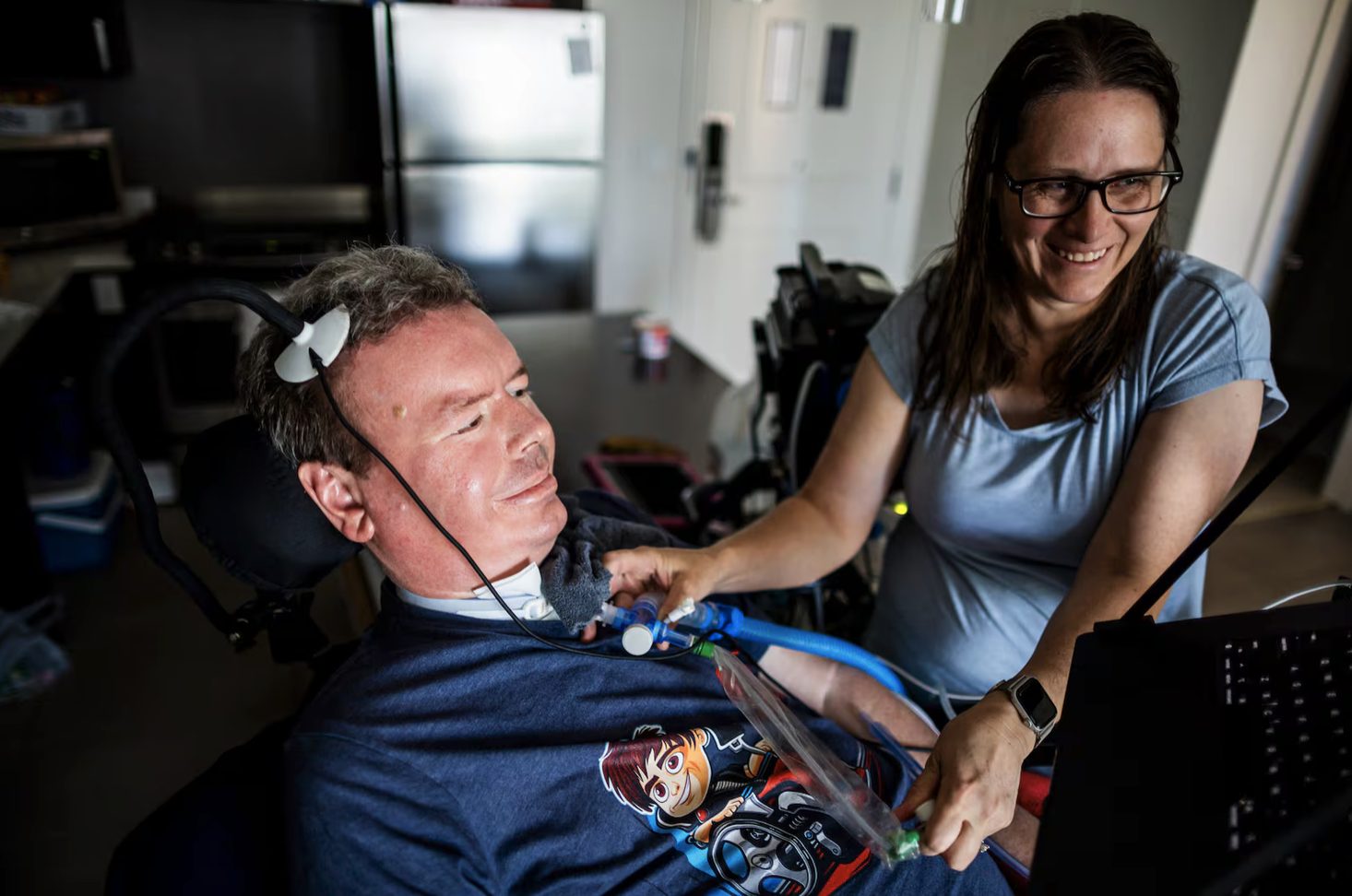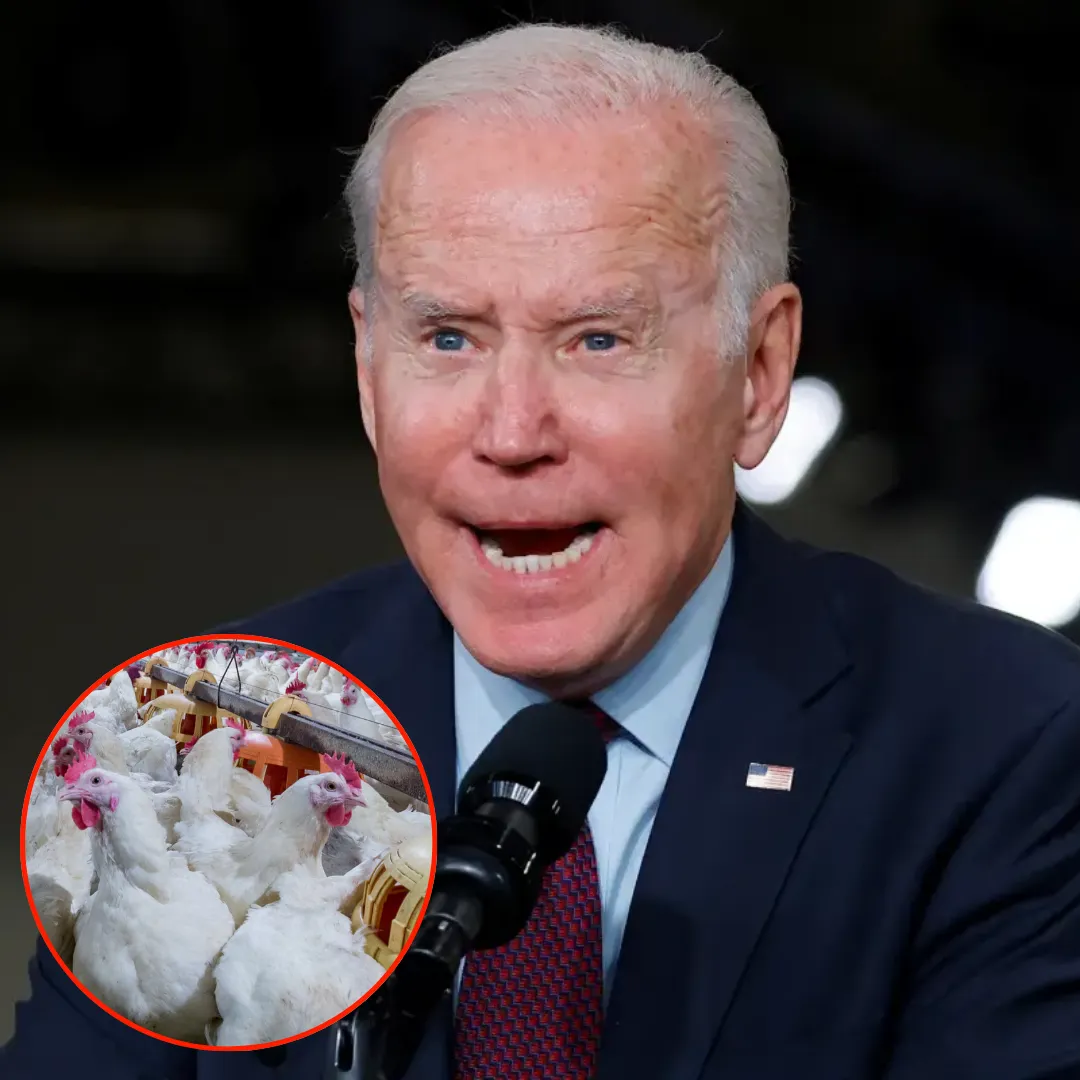
In what can only be described as a watershed moment in the intersection of neuroscience and technology, Elon Musk’s brain-chip startup Neuralink has enabled a man with ALS to regain an active digital life. Brad Smith, a father and former outdoor enthusiast from Arizona who lost his ability to speak and move due to the degenerative disease, has now become the world’s first nonverbal patient to publicly showcase how a Neuralink brain implant allows him to control a computer and communicate — not by touch or speech, but with his thoughts.
The achievement not only marks a profound technological leap but also redefines the boundaries of human potential through brain-computer interfacing.
The brain chip, no larger than five stacked quarters, was implanted into Smith’s motor cortex and contains over 1,000 electrodes that detect electrical impulses associated with motor intention. While earlier patients, such as Noland Arbaugh, have spoken about regaining independence through the device, Smith’s case presents a strikingly emotional and technical narrative.

Diagnosed with amyotrophic lateral sclerosis (ALS), also known as Lou Gehrig’s disease, Smith had lost the ability to communicate verbally, use his hands, and move freely. ALS systematically destroys motor neurons in the brain and spinal cord, leading to a progressive loss of voluntary muscle control. In its late stages, patients are often entirely “locked in,” with only their eyes to convey thought.
That was Smith’s reality — until Neuralink stepped in.
Last week, he released a YouTube video demonstrating how the Neuralink chip allows him to use a MacBook Pro entirely with his mind. With just a brain signal, he can move a cursor across the screen, click, and edit video.
What’s more remarkable is that the video he edited was narrated by what sounded like his own voice — a voice he hadn’t physically used in years. Through artificial intelligence, engineers reconstructed his voice using past recordings, allowing Smith not just to express ideas, but to do so in a voice his family and friends instantly recognized.
"I hope this is a game changer for you and your family," Elon Musk said in a call to Smith, arranged by Neuralink and captured on video by reporter and Musk biographer Ashlee Vance. Musk’s words were both literal and symbolic. Neuralink’s achievement goes beyond novelty; it is functionally altering how human beings with neurodegenerative conditions interact with the world.
;)
Smith had previously relied on eye-tracking systems to communicate — technology that works only in dark, controlled environments. Neuralink’s brain-computer interface, however, works in all lighting conditions and requires no physical movement whatsoever.
Smith simply imagines a movement — such as clenching his jaw or shifting his tongue — and the chip translates that into a digital action. This has freed him from environmental constraints and opened up avenues of expression that were once entirely closed.
One of the most poignant aspects of Smith’s story is the way Neuralink has allowed him to reenter family life. In addition to editing and narrating video, Smith now plays “Mario Kart” with his children using just his thoughts.
This simple, joyful act would be ordinary for most people, but for Smith and his family, it’s a resurrection of intimacy and shared experience. He’s no longer an observer in his home. He’s a participant.

“It took years to get here, and I still break down and cry,” Smith told Vance in an interview for his Substack publication Core Memory. “It is really nice to have a purpose greater than me. I am really excited to serve others in the future with this work.”
The implications are enormous. Neuralink’s progress could radically transform the treatment landscape for neurological disorders, spinal cord injuries, and other movement-related impairments. The technology is still in its infancy — with only three patients having received implants so far — but the vision is undeniably expansive.
Musk has often spoken of future versions of the implant that might allow users to type at the speed of thought, control robotic limbs, or even interface directly with AI.
Financially, the payoff could be equally transformative. Neuralink operates at the intersection of medical devices, AI, and human augmentation — three of the most valuable sectors in the tech economy. Should the technology continue to prove successful in human trials, it could open up multi-billion-dollar markets, not just for restorative applications but also for elective cognitive enhancements.

Of course, ethical questions loom. Critics have raised concerns about privacy, data ownership, and the philosophical ramifications of decoding thought. Neuralink has yet to publish peer-reviewed results of its human trials, and some neuroscientists remain skeptical of the company’s long-term safety claims.
However, the Smith case provides one of the first compelling, visible validations of the company's ambitions — not in abstract data but in a real person’s lived experience.
It is also a branding coup for Musk. After months of controversies surrounding X (formerly Twitter), political entanglements, and financial turbulence at Tesla, Musk’s appearance in the Neuralink rollout restores a different image: the visionary who bends the arc of science toward human betterment. While critics may question the feasibility of colonizing Mars or building a general-purpose humanoid robot, the Neuralink demonstration is far harder to dispute.
It’s here. It works. And it’s changing lives.

In Smith’s own words, the technology has restored something invaluable: dignity. From being isolated and locked into a body that refused to cooperate, he now has a tool that translates intention into action, thought into communication.
And for the first time in a long time, Brad Smith is not just surviving — he’s creating, playing, and living.
Elon Musk and Neuralink may still be far from commercial deployment or wide adoption, but the breakthrough with Smith is more than a technical milestone — it is an emotional one. It suggests that for some, the singularity is not just a theory or a fear. It’s a voice reclaimed, a game played, a father and child laughing together again.
That is no longer science fiction.
That is Elon Musk rewriting the very definition of a miracle.
-1742653910-q80.webp)
